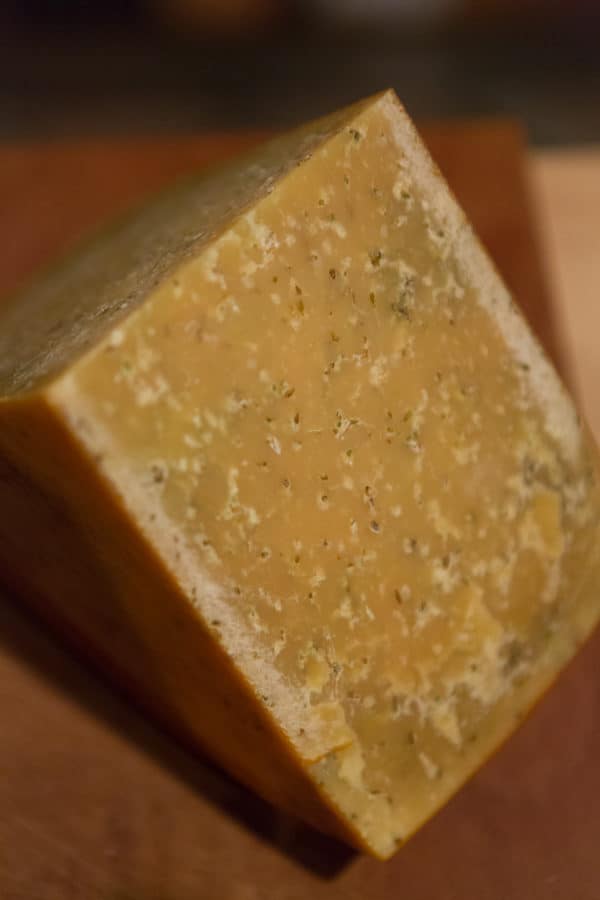
A few weeks ago, a friend of mine returned after a year living in The Netherlands. He declared his new obsession: cumin flavored cheese. He went on to show me a huge chunk that he had brought back.
I am not (anymore) one of those who dismisses flavored cheeses as “gateway cheeses”, but at some point, I did roll my eyes when consumers were excited about this style of cheese. In fact, I owe Tim Harrap from Lye Cross Farm a well of gratitude for enlightening me about flavored cheeses, especially Dutch ones.
In my book, I talk about a long tradition of flavoring cheeses in Mexico, and I take issue with people who lump all enhanced cheeses in the same group. Not only is flavoring cheese part of traditional cheesemaking practices, I would venture to say that some cheeses need the flavoring to bring out unique characteristics. Case in point is Dutch cumin Boeren Leyden.
Traditional gouda is a comfort cheese in The Netherlands, a staple that is eaten at breakfast or lunch—always present, always there. The flavored Boeren Leyden, made with raw milk, is also common and has even been recognized by Slow Food as part Ark of Taste food.
Boren Leyden with cumin was one of the unique cheeses that I got to sample in Bra, Italy, in September. The flavor is sweet, almost with caramel notes, followed by a nice round earthy flavor and aroma from the cumin.
This cheese is seldom available in the US, and even if US-based cheesemakers are making similar cheese—like those by Marieke Penterman, who was part of the American delegation to Bra this year—there is a whole world of cheese that we are not exposed to. This applies not only to fresh raw milk cheeses aged under 60 days, which by law cannot enter the country, but also applies to styles that importers deem “too rustic” or “not saleable” to folks accustomed to block cheddars and creamy soft cheeses. However, I think the market is open to many things and seeing such diversity in Bra made me hopeful that people are still making styles that are unique and interesting.
Amongst the highlights were cheeses from Romania, Poland, Brazil, and regions of well-known cheesemaking cultures, but that we don’t know much about. Also, I had the opportunity to taste cheeses made with heritage breeds of animals—like Parmigiano Reggiano made with White cow’s milk in Italy or a cheddar made with Guadarrama goat’s milk from Spain. There were cheeses made with native cultures in a special pavilion dedicated to educating people about the problems of standardization of cultures and monopoly by a few companies.
Slow Food recently published a book on these cheeses called “Formaggi Naturali” and many of the cheeses there follow the same principles that American cheesemakers are championing in the Cornerstone Project.
The Bra Cheese Festival is a unique opportunity to re-acquaint yourself with cheeses that you love and meet new ones. But I think the most important part of the festival and a good reason to replicate it elsewhere in the world, is that it keeps moving the conversation forward.




Taste Oakdale flavoured Gouda